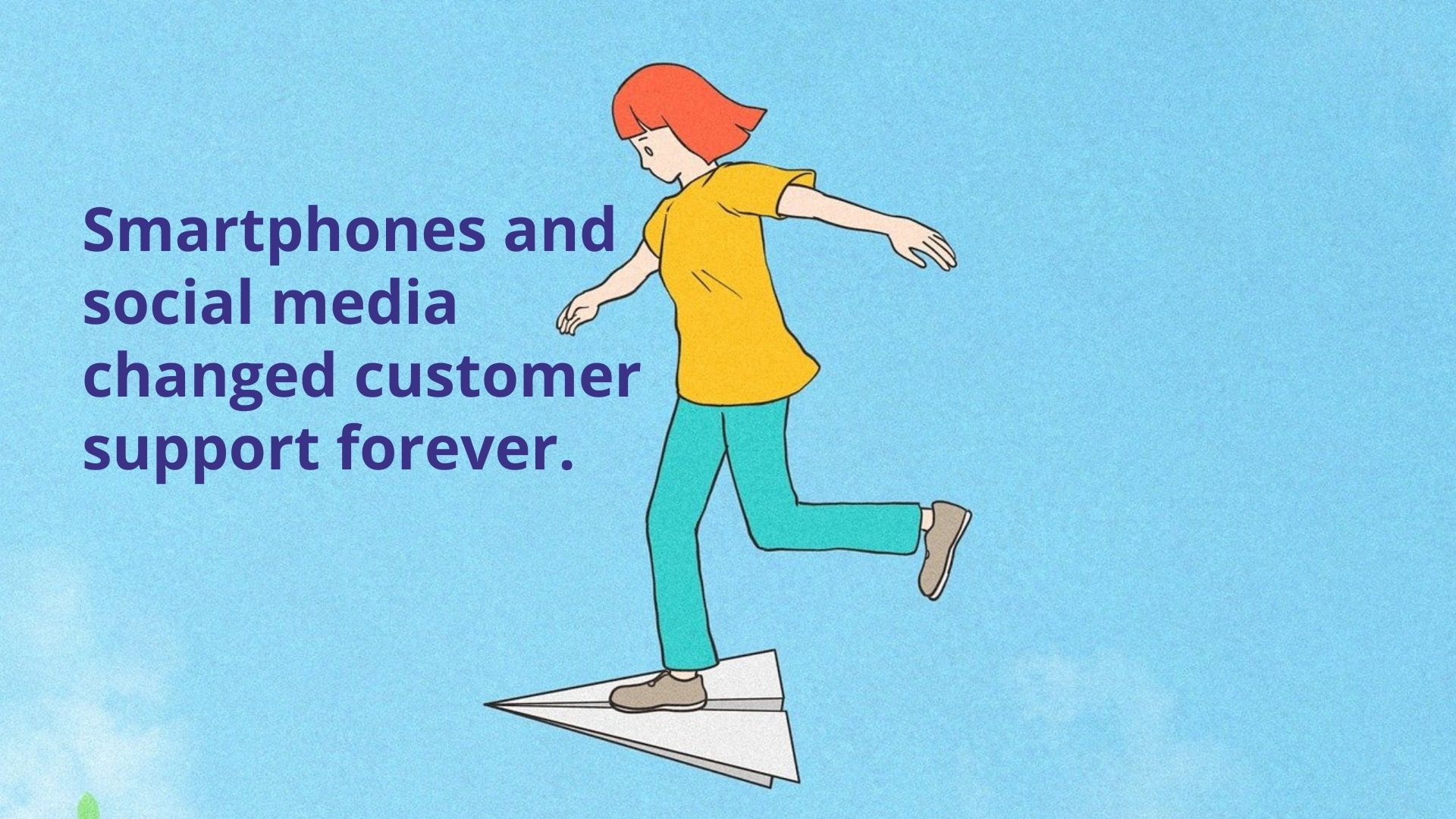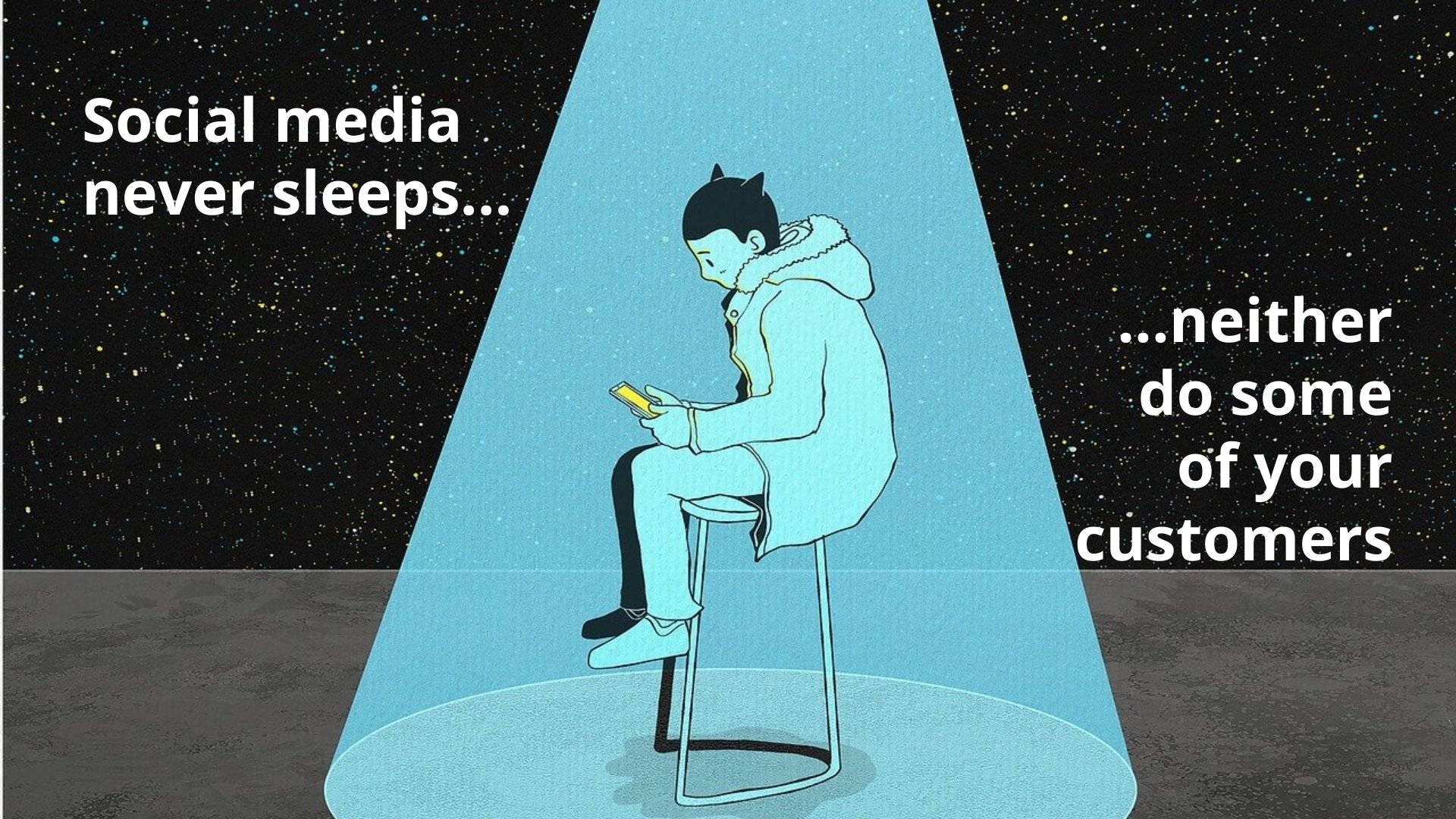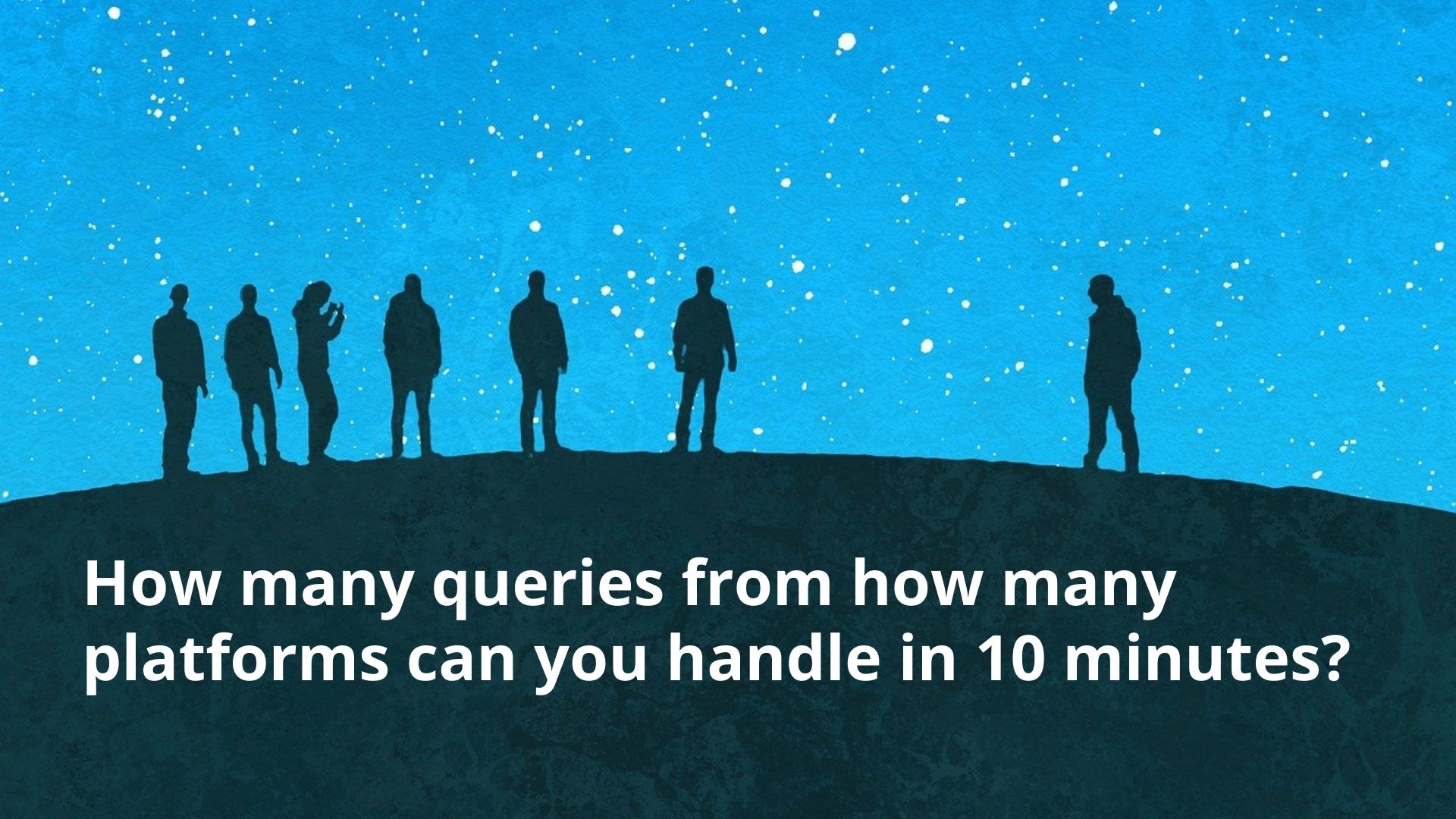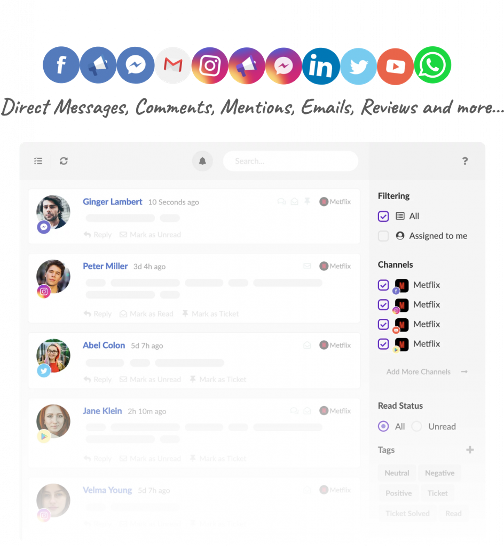Multichannel Help Desk for Customer Support
Inci Vardar

Once upon a time (like about 25 years ago, when social media was not invented and multichannel help desk meant “the chatty owner of a market stall”) there was an unsatisfied customer. Let’s call her Rapunzel.
Rapunzel bought a shampoo from a store but upon arriving home, she found out that it had salt in it. Having learned that salt was bad for her hair, she got furious and decided to make the store owner pay for his callousness. She commenced on the 30-minute walk to town, rapping her feet fiercely at every step and thinking about the violent discussion that would take place. She would have extremely clever responses to every little excuse and surely people would support her call for justice because she was the customer. It was her right to be always right!
After walking for about 10 minutes she slowed down, started breathing regularly, and soon enough, she wasn’t that angry anymore. When she started thinking more clearly, she thought it wasn’t worth having a public debate about her right to be sold unsalted shampoo while she had better things to do. She would deal with it next time she went to town – unless she forgot.
25 years ago phone and email were accessible but basically the same thing would happen with Rapunzel while she was waiting to be connected to a call center agent. That kind of customer support ended with the emergence of smartphones and social media. The evolution of multichannel help desk software began.

What Is Multichannel Customer Support?
Multichannel customer support (also known as omnichannel help desk) is a fairly new and ever-evolving concept. With every new platform, comes new integrations. But before going deeper into that, let’s go back to basics.
About two decades ago email groups turned into platforms and the era of “conversation” began. While the technologies improved, so did the problems – they are much more complex than the demand for unsalted shampoo now.
Brands can no longer have one-way communication. They need to listen closely, catch every bit of query from every platform that has gazillions of users, and understand and classify them swiftly before providing the correct answer… all in a reasonable amount of time. Because sometimes timing determines if a support demand will turn into a crisis or a win. Social media never sleeps, and neither do some of your customers. They can send a message from any platform, any time, assuming that someone is there to help right away or first thing in the morning.

But how will you catch up? Did you allocate each of your active brand platforms to a team member? How often do they check the messages? Are they actively monitoring the conversations? Do they have all the necessary answers or do they need to ask you (or a third party) and wait for the correct response every now and then?
If you can solve problems effectively and at a reasonable cost, then it’s great (extra points if you can put a smile on your customer’s face and a referral into her mind). Then you might not need multichannel help desk software at all.
Not to scare you or anything but let me remind you what Joker says: “All it takes is one bad day…” And some problems might need to be solved immediately.
Here is a short story about the benefits of multichannel customer support…
Rapunzel spent a period of time that felt like forever at her tower. One day she left her misery behind because she was going to a ball at last! But her invitation letter was somehow not valid, right at the entrance she found out. The band was about to go on stage and somebody needed to solve this problem fast.
So she grabbed her phone and wrote a direct message to the venue’s Instagram, arguing with the guards all the time. Minutes passed without an answer, so she tried her chance on Twitter. Little did she know that there was some kind of problem on the other end. The backups didn’t even know they were needed but her hope prevailed. She tried every platform she could and mentioned everybody who could help her, as anyone in that situation would.
(In another version of this story Rapunzel received an answer but it was late and kind of sloppy. It did more harm than good, unfortunately.)
Well, the little misunderstanding (which could have been gently solved in minutes) turned into a social media thing. Because it was only the first time something like that happened (and also because the venue made all the amends it could), they were soon forgiven. But not forgotten. Especially not by Rapunzel. The memory will remain in the safety of servers, where it can be reached by any internet user with a simple Google search.
The moral of the story – who would guess? – is that you might really benefit from a reliable multichannel help desk tool if,
- your brand or agency is active on multiple platforms
- have customers who might need support in utilizing your products or services
- and receive time-sensitive queries that require teamwork
Let’s rewind and make Rapunzel happy. After all, deep down we all like to ease somebody else’s burden.
An Example of How Multichannel Customer Support Can Work
So Rapunzel goes to the ball and things go wrong. In order to increase the excitement of the story, let’s say a dozen people who bought their tickets from the same vendor were experiencing the same issue. So each of them uses their favorite communication channel to address the problem.

Since it’s a bad day, the person responsible for taking care of the messages was driving because of an emergency and there was no time to alert anybody for about 20 minutes. With multichannel help desk software, what happens is something like this:
- Users try to reach the venue from different channels.
- All the queries are received in the unified social media inbox.
- They are automatically classified and if needed, replied with an automated response to save time.
- The related parties get informed via the ticket system.
- The available team members handle the situation by requesting additional information, allowing them to find out about the vendor issue.
- They contact the vendor in real-time on the multichannel help desk system’s live chat, inform them about the problem, and plan the next step.
- The issue is solved in minutes and the venue can offer the guests free drinks to make up for their slightly negative experience.
What started as a bad day turned out to be a win. Rapunzel wouldn’t forget how the brand saved the special day either. After all, she shared her joy extensively on Instagram with “#freedrinks @venue rocks! 🤘”
Now it’s time to meet the secret hero of this story.
A Highly Comprehensive Multichannel Help Desk Tool: Juphy
Juphy is a unified social media inbox that helps you take care of all customer queries, including email, social media, and reviews. While supporting all the social media platforms you currently need, it is also constantly being improved in line with the users’ needs. That’s one of the reasons why Juphy was featured on Product Hunt and received 4.8 stars from 300+ customer reviews.
With its user-friendly, minimalistic UI, Juphy allows you to switch through platforms and accounts seamlessly. Currently, you can add multiple accounts and keep track of engagements on 9 different platforms. Live chat through the Facebook Messenger widget, team collaboration options, and other cool features make Juphy an essential tool in your digital marketing arsenal.

Features of Juphy Multichannel Help Desk
Official marketing partner of the industry leaders: Juphy works with the best in order for you to track and respond to all your user engagement from Facebook (Facebook page and group comments, Facebook Messenger, ads comments), Instagram, Twitter, LinkedIn, YouTube, Google My Business, AppStore, Google Play Store, and Email in a single dashboard. No need to switch between different platforms anymore.
Multiple accounts at your fingertips: You can manage engagements from multiple brands in separate workspaces. All it takes is one click to switch between brands. The user queries from all accounts of the brand are neatly classified, and all the past conversations are available to be observed. Also with filtering options or search feature, you can find out about the tickets opened for a specific issue, how it was resolved, and the team members that provided support.
Everybody on the same page: You can add team members to specific groups and assign them roles for seamless collaboration. If you don’t have the perfect response to a customer query, you can pass internal notes about past conversations and discuss the issues behind the scenes with teammates before replying. No more waiting for support from teammates, it’s all in real-time.
Handle issues in record time: Collaboration works great in tricky situations but a significant part of the work is based on answering frequently asked questions with copy-paste responses. In this situation, canned responses work best and save you a lot of time. Another time-saving feature of Juphy is live chat integration. You can make use of real-time messaging via Facebook Messenger, WhatsApp, and Twilio. Don’t forget to check the reports to observe your improved customer support performance.
One tool to rule them all: With Juphy you won’t need an additional social listening tool to monitor keywords on Twitter. Just select the channel that you want to set an automation rule, type in several keywords, and link it together with a tag. When you set the rule, incoming messages that contain the defined sentiment or keywords will be automatically classified for you to observe them right from your inbox.
Start your 7-day free trial to keep track of your brand’s user engagements happily ever after. It takes about two minutes to set up and no credit card information is required. We’d like to read about your experience on any social media channel you prefer, any time.

